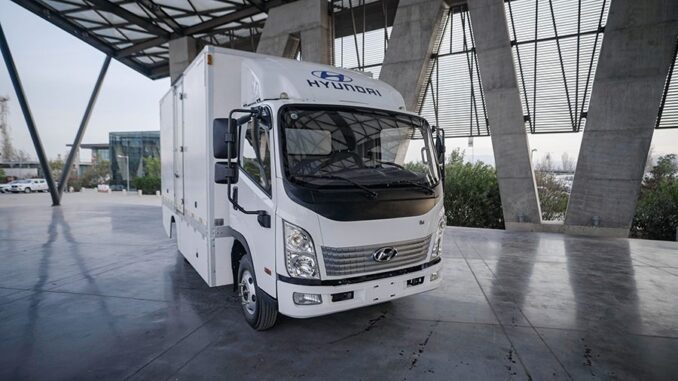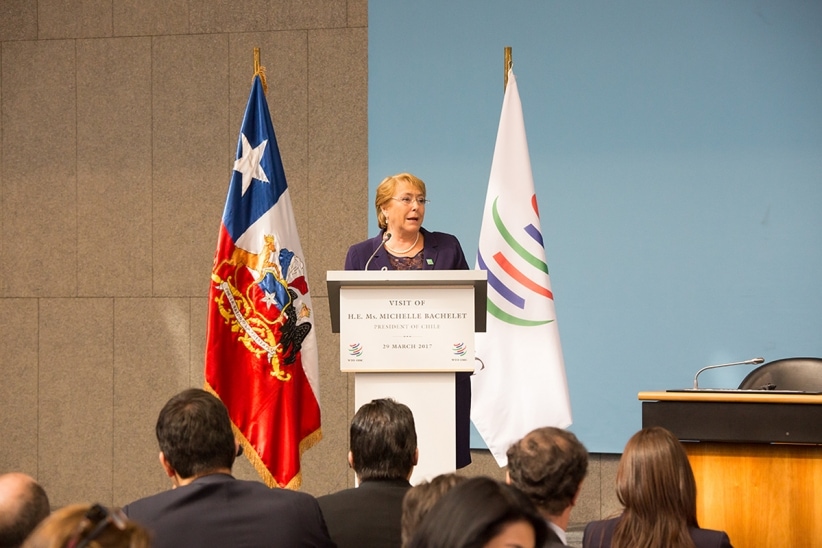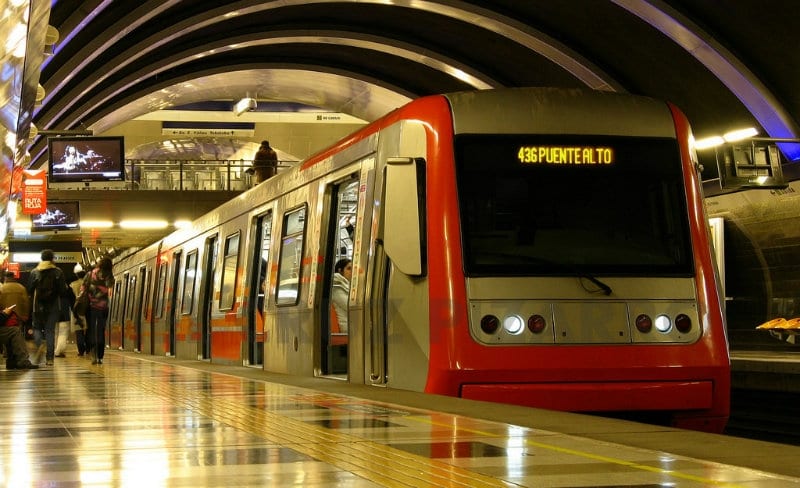
As the leading country in the region on the road to new sources of energy for vehicles, Chile last week added a new charging point for battery-powered engines next to the Nueva Angostura tollbooth and is the first of a total of 5 to be implemented on Ruta 5 Sur between Santiago and Talca.
This new milestone is part of the “ElectroRuta Enel X” project, the most ambitious electromobility plan in Latin America, which includes the installation of 1,200 charging points throughout Chile from Arica to Punta Arenas.
Since 2016, Chile has had a National Electromobility Strategy, which includes the goal of electrifying 40 per cent of the private fleet by 2050. The Government expects its public, private and commercial fleet of electric vehicles to reach 5 million by mid-century, which would avoid 11 million tons of CO2 per year, according to government estimates.
There are already 581 electric cars in the country, all of them imported. The country also has two main fast recharge corridors. One is known as Voltex and is located in the south-central area, while the second is located in the south of the country and is connected to the Argentine province of Neuquén.
Ruta del Maipo, who built the two-lane two-way 237-kilometre dual carriageway on Ruta 5 Sur, including a new South Access to Santiago and a bypass to Rancagua, last week installed its first fast-charging point for electric vehicles on the road which is a part of Enel X’s public infrastructure plan. The new device consists of a 50kW JuicePump charger next to the Nueva Angostura tollbooth, at kilometre 54 of Ruta 5 Sur, which connects Santiago and Talca.
It is the first of 5 chargers to be installed along Ruta del Maipo, allowing connectivity through an electric car between the Metropolitan region and the Maule region.
This charging point is equipped with complete smart grid integration, power adaptation and mobile connectivity that allows remote control and maintenance, which is compatible with the main charging standards for vehicles currently on the market and is capable of charging a vehicle in 35 minutes.
By 2025 it is estimated that there will be more than 81,000 electric vehicles in Chile, for which ElectroRuta Enel X will provide over 50% of the energy charging infrastructure required, with one charger every 60 kilometres.
“Electric mobility is a strategic pillar since it is a fundamental piece to move towards a cleaner energy matrix that contributes to reducing pollution in cities. This charging infrastructure plan for electric vehicles is one more example of the company’s commitment to accelerate the country’s decarbonization process ”, explained Karla Zapata, general manager of Enel X.
Hyundai is leading Chile’s assortment of electric vehicles and last week launched locally the Zedo 300 EV, the first electric truck to arrive in Chile. The vehicle is part of the Government’s Electrologistica Plan and will be on sale before the end of the year.
As electromobility continues to advance in Chile, which is why the Government has launched Electrologística, a public-private initiative led by the Energy Sustainability Agency, together with the Logistics Development Program of the Ministry of Transport and Telecommunications, which seeks to promote the use of electric vehicles for urban logistics, in addition to generating and making data available to facilitate decision-making for those who want to join the new technologies. The Zedo 300 EV is one of the seven vehicles that the execution of this plan includes.
The Zedo 300 EV has an autonomy of 300 km and can carry up to 1,700 kg of cargo and 19 m3 in volume. It has a 120 kW engine and a torque of 320 Nm, associated with a 5-speed automatic transmission + reverse, together with an eco-drive system for the efficiency of its autonomy and braking ABS. The sale price is still under evaluation.
And earlier this year, Transport Minister Gloria Hutt, together with Environment Minister Carolina Schmidt Santiago’s International Airport General Manager Xavier Lortat-Jacob had launched the new fleet of shuttle units for the Arturo Merino Benítez air terminal. Of the 66-unit new fleet of 6 buses run only on electricity, it was announced.
Schmidt said that “efforts such as that of the airport to be the first in Latin America to have electric buses, are key to promoting electromobility in Chile, which is at the heart of our climate policy…”
“We have set ourselves clear objectives such as 100% of public transport being electric by 2040, ten years before the previous goal, and that by 2022 we will have 10 times more electric cars than today,” she added.



